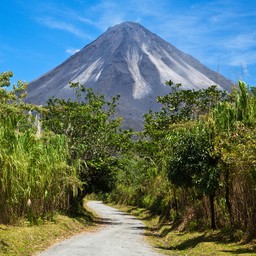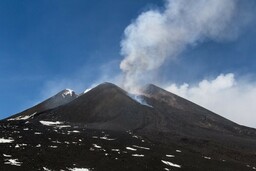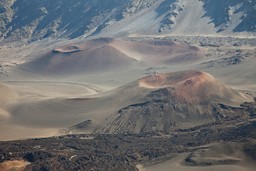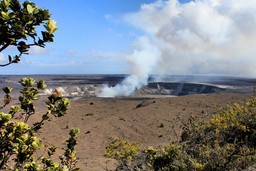6. Earth's crust
Contents
6.1 What is the Earth like?
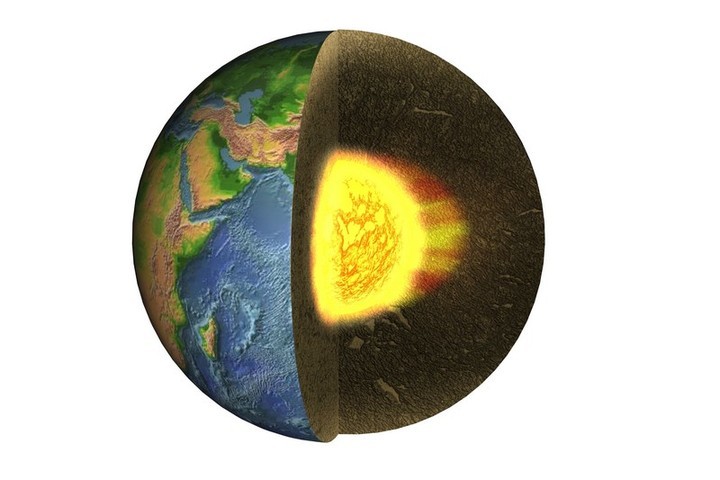 Planet Earth is approximately 4,5 billion years old. In the beginning, the Earth was a cold planet, but in time its temperature started to rise. As a result of the rising temperature, the heaviest substances sank deep inside the planet to form its core, and lighter rock remained "floating" on the surface of the planet. As a result of this process, planet Earth gained its layers.
Planet Earth is approximately 4,5 billion years old. In the beginning, the Earth was a cold planet, but in time its temperature started to rise. As a result of the rising temperature, the heaviest substances sank deep inside the planet to form its core, and lighter rock remained "floating" on the surface of the planet. As a result of this process, planet Earth gained its layers.
The internal layers of the planet contain energy. This energy causes changes in the Earth's crust. These changes are manifested as different phenomena, such as earthquakes. These phenomena originate from inside the planet, and are therefore called endogenous processes.
The energy radiated to the surface of the planet Earth from the Sun also modifies the planet's crust. These phenomena include wind and rain. Because these processes originate outside the planet's surface, they are called exogenous processes.
6.2 Parts of the Earth
The structure of planet Earth can be divided into three parts: a crust, a mantle and a core.
The thickness of Earth's crust ranges from a few kilometers to tens of kilometers. The planet's crust is comprised of oceanic and continental plates. The oceanic plates are thinner than continental plates.The planet's mantle is approximately 3 000 kilometers thick. The core of planet Earth, which consists of a liquid outer core and a solid inner core, is also approximately 3 000 kilometers thick.

6.3 Tectonic plates
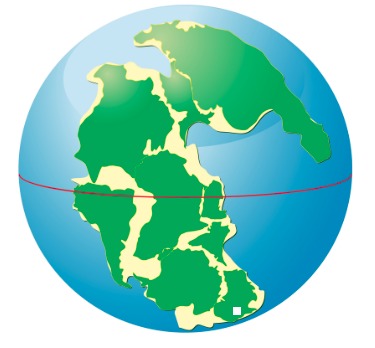 Earth's crust is divided into differently sized parts called litospheric or tectonic plates. These plates can consist of continents and oceanic parts, and they move by either bumping into each other, moving away from each other, or by gliding past one another.
Earth's crust is divided into differently sized parts called litospheric or tectonic plates. These plates can consist of continents and oceanic parts, and they move by either bumping into each other, moving away from each other, or by gliding past one another. Our planet's crust is divided into seven tectonic plates. These plates are those of Africa, Antarctica, Australia-India, South America, Eurasia, North America, and the Pacific Ocean. In addition, the planet's surface also contains other, smaller plates. All of these plates float and move above the planet's mantle, which consists of molten rock.
Over the course of our planet's history, the continental plates have moved and shifted drastically. They continue their movement to this day.
6.4 Endogenous processes
 The surface of planet Earth is modified by various internal or endogenous processes. These processes are caused by currents that occur inside the Earth with the help of thermal or heat energy.
The surface of planet Earth is modified by various internal or endogenous processes. These processes are caused by currents that occur inside the Earth with the help of thermal or heat energy.Currents occur in the planet's mantle. They consist of the slow movement of molten rock. These currents make the tectonic plates above the Earth's mantle move in different directions.
Endogenous processes include the movement of tectonic plates (plate tectonics), mountain orogeny, earthquakes and volcanic activity.
6.5 Plate tectonics
 Tectonic plates can move in different directions relative to each other. Study the pictures on the right. The picture on the top shows how plates diverge from each other at a mid-ocean range. The picture in the middle shows plates moving sideways. In the picture on the bottom, two plates are shown colliding against each other.
Tectonic plates can move in different directions relative to each other. Study the pictures on the right. The picture on the top shows how plates diverge from each other at a mid-ocean range. The picture in the middle shows plates moving sideways. In the picture on the bottom, two plates are shown colliding against each other. In the Mid-Atlantic range, the Eurasian and North American plates diverge from each other at a speed of a few centimeters per year. When litospheric plates diverge, new plate mass is created. This happens when molten magma that erupts from between the oceanic plates solidifies. Sometimes, the solidified lava can grow as high as the ocean's surface, creating a new island. Iceland, for example, is a result of such a process.
Lithospheric plates can also move sideways past each other, while at the same time rubbing against each other. The San Andreas fault in California is a good example of this kind of tectonic movement. The fault is some 1 300 kilometers long. At the location of the fault, two lithospheric plates move in different directions, causing powerful earthquakes.
When lithospheric plates collide with each other, volcanoes and mountain ranges are formed. As the plates move against each other, earthquakes can also be noticed. One such collision zone runs through the Mediterranean, as the African Plate moves towards Europe. This collision zone has resulted in various mountain ranges, such as the Alps, the Balkans, the Carpacian mountains, and the Apennines. The collision zone also includes a number of active volcanoes, such as Etna, Stromboli and Vesuvius.
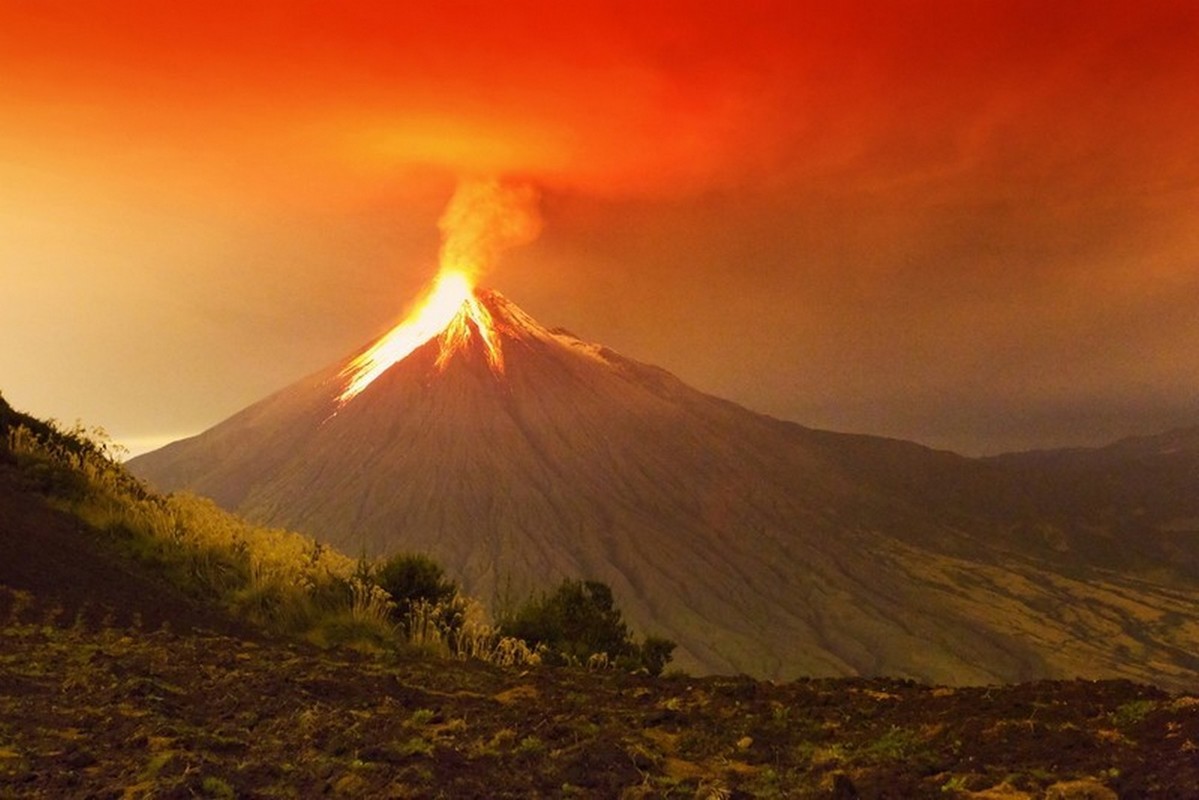
A volcano in Ecuador. It has formed as a result of two tectonic plates colliding with each other. Molten magma is erupted to the surface of the Earth.
6.6 Earthquakes
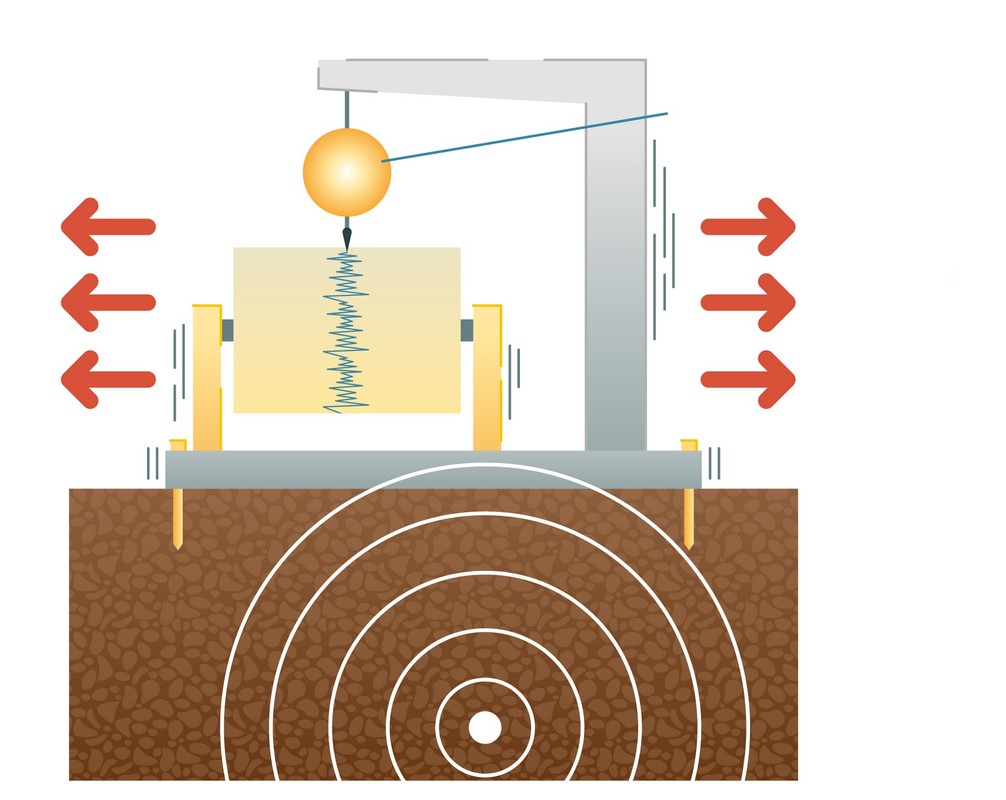 Earthquakes are caused by the movement of tectonic plates or the shaking of bedrock. Earthquakes mostly occur near the border zones of different lithospheric plates.
Earthquakes are caused by the movement of tectonic plates or the shaking of bedrock. Earthquakes mostly occur near the border zones of different lithospheric plates.
The strength or magnitude of an earthquake is measured on the Richter scale. An earthquake below the magnitude of two on the Richter scale can not be perceived by humans.
If the magnitude of an earthquake is over nine on the Richter scale, it will result in massive destruction that can cover an area of a few thousand kilometers. Thankfully, earthquakes of such magnitude occur only once in 20 years on average.
The consequences of earthquakes are not limited to structural damage, but they can also result in fatalities, injuries, and people losing their homes or livelihoods. An earthquake can also cause destructive storms called tsunamsis, as well as landslides.
Predicting earthquakes is difficult. In some areas, earhtquakes can occur between set time frames, but the precise time or location of an earthquake is impossible to predict.
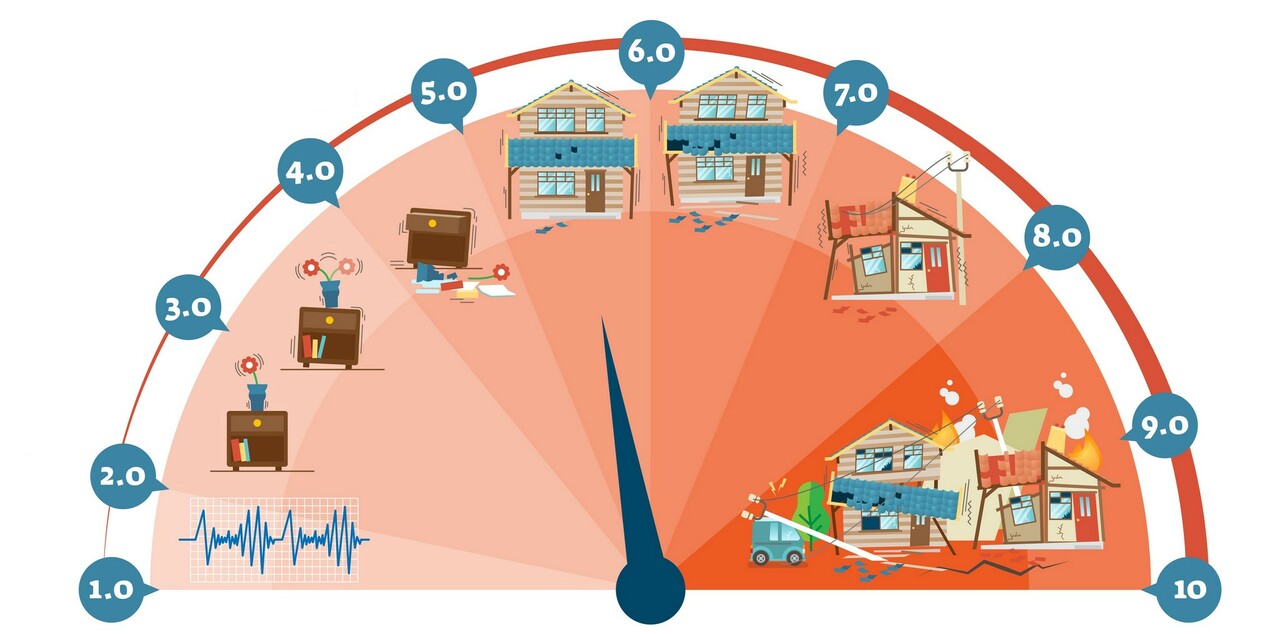
The magnitude of an earthquake is presented on the Richter scale.
| Event | Area | Date | Fatalities (estimate) |
|---|---|---|---|
| Earthquake | Haiti (Central America) | 12.10.2010 | 223 000 |
| Earthquake and tsunami | Sumatra (Indonesia, Asia) | 26.12.2004 | 220 000 |
| Earthquake | Pakistan, India, Afganistan | 8.10.2005 | 88 000 |
| Earthquake | Central China | 12.5.2008 | 84 000 |
| Earthquake | Iran (Asia) | 20.6.1990 | 40 000 |
| Earthquake | Iran (Asia) | 26.12.2003 | 26 000 |
6.7 Tsunamis
 The word tsunami comes from the Japanese term tsu-nami, meaning "harbor wave". A tsunami is a series of strong waves that is caused by movement in the seafloor. Tsunamis are mostly caused by earthquakes, but they can also result from landslides that fall into the sea, volcanic acitivity or meteorite strikes.
The word tsunami comes from the Japanese term tsu-nami, meaning "harbor wave". A tsunami is a series of strong waves that is caused by movement in the seafloor. Tsunamis are mostly caused by earthquakes, but they can also result from landslides that fall into the sea, volcanic acitivity or meteorite strikes.
A tsunami sets the water mass of the sea in movement. A wave caused by a tsunami can be hundreds of kilometers long and even 10–30 meters tall. A tsunami wave can move at a speed between 500 and 900 km/h. The speed of the wave depends on the depth of the sea in which the tsunami originates.
As the tsunami moves towards the shore, its speed decreases but its waves grow taller. Tsunami waves cannot be evaded by running.
The destructive capability of a tsunami is caused by its strong current, which can even move cars. Gently sloped beaches are extremely suspectible to tsunami damage, as the water can move further inland.
Nowadays, many countries use tsunami warning systems that give a signal whenever a large earthquake occurs in the seafloor. After this, sea levels are studied near the origin of the earthquake, and the tsunami warning is either given or cancelled depending on this information.
6.8 Volcanoes
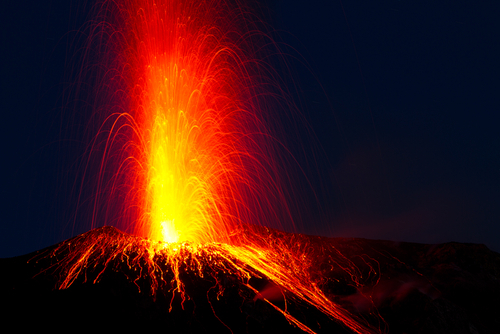 Volcanoes tell us that the Earth's mantle consist of molten rock called magma. As tectonic plates move, the pressure of magma in the Earth's mantle increases. The pressurized magma erupts through a thin spot in the Earth's crust. The molten magma that erupts to the surface of the Earth is called lava.
Volcanoes tell us that the Earth's mantle consist of molten rock called magma. As tectonic plates move, the pressure of magma in the Earth's mantle increases. The pressurized magma erupts through a thin spot in the Earth's crust. The molten magma that erupts to the surface of the Earth is called lava.
Volcanoes, like earthquakes, are the most common near the border zones of tectonic plates. Volcanoes can also exist under water.
Volcanic eruptions tell us that a volcano is active, but predicting the time of a volcanic eruption is impossible. Some volcanoes are monitored with different measurement devices, which are used to gain information about the volcano's activity and hopefully warn neighboring areas of an impending eruption.
Volcanic eruptions disturb human activity. During a volcanic eruption, volcanic matter such as ash is released to the atmosphere. This volcanic matter can create problems for agriculture and air traffic.
| Area | Volcano | Year | Damages |
|---|---|---|---|
| Greece | Santorini | 1650 | An extremely powerful eruption and tsunami. No clear information on the damages. |
| Italy | Vesuvius | 79 | Approximately 3 400 fatalities, including the Roman city of Pompeii. |
| Hawaii | Kilauea | 1983 | Lava covered over 80 km2 of the island. |
| Columbia | Nevado del Ruiz | 1984 | Over 20 000 fatalities. |
| Area | Volcano | Why is it worth following? |
|---|---|---|
| Italy, Napoli region | Campi Flegrei | A supervolcano. A large caldera with 24 craters. It has risen over 30 cm during the 2000s. It has increased its volcanic activity during recent years. |
A volcano.
Gallery: Volcanoes
Summary
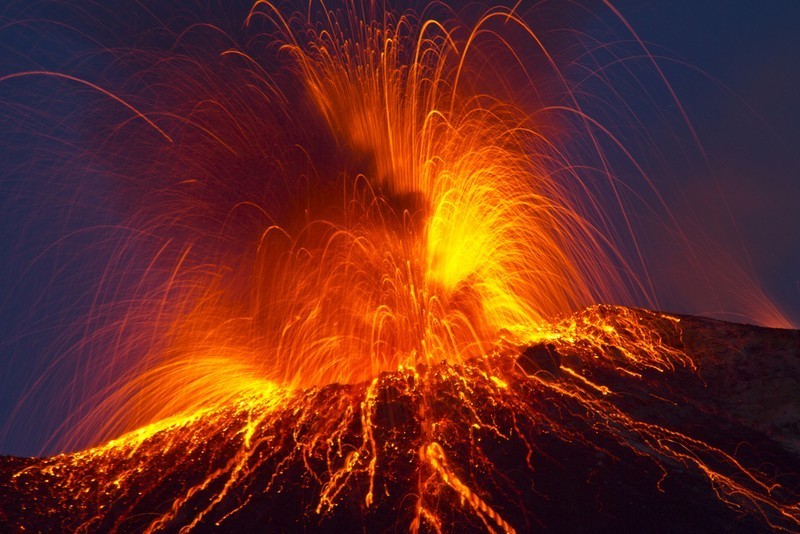 The structure of planet Earth consists of a crust, a mantle and a core.
The structure of planet Earth consists of a crust, a mantle and a core.- The planet's crust is comprised of lithospheric or tectonic plates.
- The planet's mantle consists of molten rock, which can sometimes erupt to the planet's surface.
- The movement of tectonic plates results in endogenous processes.
- Tectonic plates move in different directions relative to each other. This movement results in earthquakes, tsunamis and volcanic activity.
